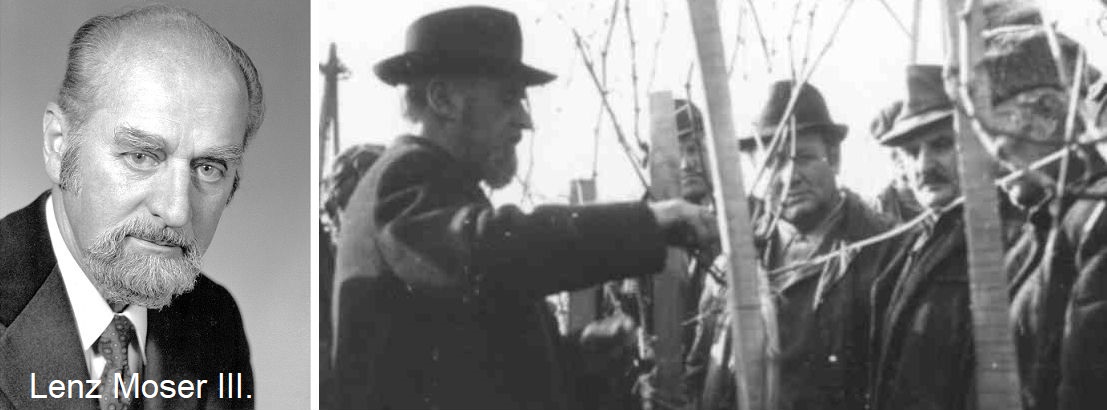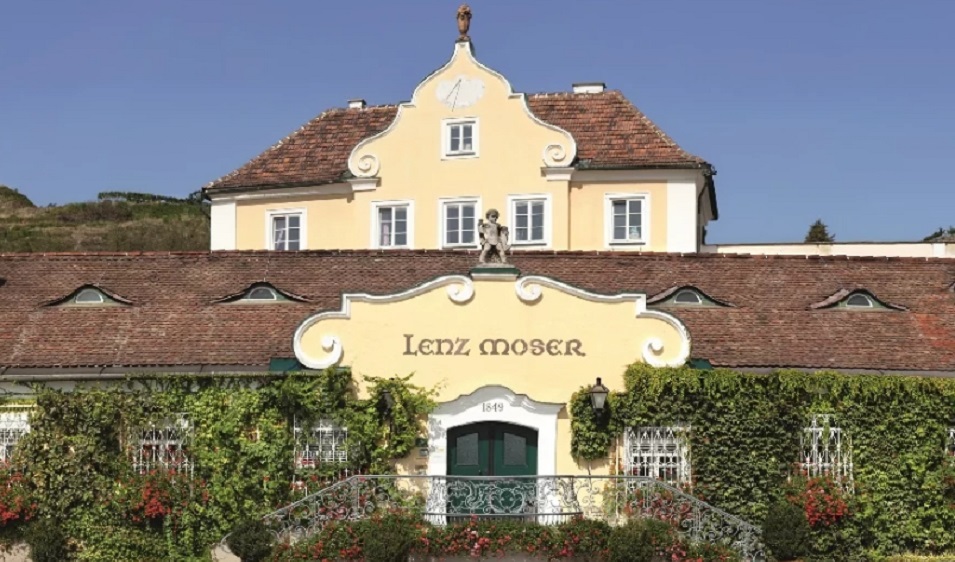The "Lenz Moser Winery" is located in Rohrendorf near Krems in the Kremstal wine-growing region (Lower Austria). Sier is one of the oldest and largest in Austria. In 1040, Emperor Heinrich III (1017-1056) donated vineyards and the associated cellar in Rohrendorf to the Ebersberg Abbey of the Benedictine Order in Bavaria. However, parts of the estate cellar had already been dug into the mighty loess terraces between 970 and 980. A "Moser" appears for the first time in 1124 as the administrator of Ebersberg Abbey; he is an ancestor of the Moser dynasty, which has been documented without interruption since the 16th century. After several changes of ownership and the abolition of serfdom, in 1849 Anton Moser became the owner of the vineyards and the cellar in Rohrendorf, which was then called the Zehentkeller and has remained the ancestral home to this day. In 1880 Laurenz Moser I took over the cellar in Rohrendorf and expanded the vineyard areas.

He was succeeded by his son Laurenz Moser II in 1913. His son Dr. Laurenz Moser III (1905-1978) completed his studies at the Klosterneuburg Viticulture Institute in 1922. He then undertook study trips to many European wine-growing regions. He took over the estate in 1929. From the end of the 1920s he undertook experiments with a wire-frame supported vine training, which he called high culture and which is also called "Moser culture" after him. From 1936, this was used exclusively in his own company. The textbook "Weinbau einmal anders", published in 1950, was translated into many languages. Moser gave numerous lectures and published many papers at home and abroad.

Moser high culture
After the severe winter frost in 1956, the final breakthrough of the high culture was achieved. As a result, almost the entire Austrian viticulture was converted to the system within a few years. Laurenz Moser III was mayor for many years and then honorary citizen of his home municipality Rohrendorf. For his services he was awarded an honorary doctorate from the University of Natural Resources and Applied Life Sciences in Vienna in 1970 and given the title of "Professor". In gratitude, a monument was erected in Rohrendorf by the Austrian winegrowers in 1980. His son Laurenz Moser IV (*1929) was a pioneer in propagating organic viticulture on a large scale as early as the mid-1970s. Under his leadership, the first attempts were made in Austria to produce red wines in barriques (from Mailberg) and he also pushed through the cultivation permit for the Cabernet Sauvignon variety from 1982. In 1986, the vineyards with the vine nursery in Rohrendorf were separated and a business under Sepp Moser was run on two sites by Nikolaus Moser.
Major changes
On 1 September 1986 the Lenz Moser winery was incorporated into GHG Linz (a subsidiary of VOG AG). As number 15 in the family generation, Lenz Moser V. (*1956) took over the management until 1997. In 1998, the winery was converted into a public limited company. At the end of that year, Lentz Moser V. then moved to the Californian wine multinational Mondavi and set up the European branch "Robert Mondavi Europe" in Germany in Frankfurt am Main. After the sale of Mondavi to the US multinational Constellation Brands, he returned to Austria in 2005 and founded the independent wine company Laurenz V. with two partners.
Today's business
The head office is in Rohrendorf near Krems, from where all marketing and sales activities are controlled. Michael Rethaller is the cellar manager and head oenologist, Christoph Bierbaum is responsible for marketing. Depending on the type of wine and grape variety, vinification takes place in stainless steel tanks, large wooden bar rels and barriques. There are cooperations with winegrowers and winegrowers' cooperatives from various winegrowing regions in Lower Austria and Burgenland. The vintners work according to quality guidelines and are supervised by Lenz Moser oenologists. A special feature is the historic 1,000-bucket barrel with 56,500 litres or 75,333 bottles and an empty weight of 13,000 kg. The bottom of the barrel is decorated with elaborate carvings. The barrel, which is no longer in use, was completely renovated with oak wood from local forests. In autumn 2017, it was filled with red wine for the first time. The ceremonial inauguration with wine christening of the barrel took place in November.

In addition to the parent company, the Schlossweingut Malteser Ritterorden in Mailberg in the Weinviertel has been operated since 1969 and the Klosterkeller Siegendorf in the Leithaberg winegrowing region of Burgenland since 1988. The total area under vine is around 2,700 hectares. The main grape varieties are the white wine varieties Grüner Veltliner, Riesling, Gelber Muskateller, Grauburgunder (Pinot Gris), Weißburgunder (Pinot Blanc), Welschriesling, Rivaner (Müller-Thurgau) and Bouvier, as well as the red wine varieties Zweigelt, Blaufränkisch, St. Laur ent, Merlot, Cabernet Sauvignon and Cabernet Franc. The wine lines are Lenz Moser Prestige, Lenz Moser Selection, Alter Knabe, Fête Rosé, Pfiffikus, Storch and Servus. The premium wines are the red wine cuvées "KKS O'Dora" (CS, CF) and "Noah" (Zweigelt, Cabernet Sauvignon, Merlot) as well as the white wine "Selection Grüner Veltliner". Around 19 million bottles of wine and sparkling wine are produced annually, of which around one third is exported, with Germany as the main export market. See also under Lenz Moser Family.
Lenz Moser: Fotostudio Gartler, Krems an d. D., CC BY-SA 3.0, Link
Moser in the vineyard: by Unknown - Weinbauschule Krems, GFDL 1.2, Link
Winery building: Lenz Moser AG
Voices of our members

For my many years of work as an editor with a wine and culinary focus, I always like to inform myself about special questions at Wine lexicon. Spontaneous reading and following links often leads to exciting discoveries in the wide world of wine.
Dr. Christa Hanten
Fachjournalistin, Lektorin und Verkosterin, Wien